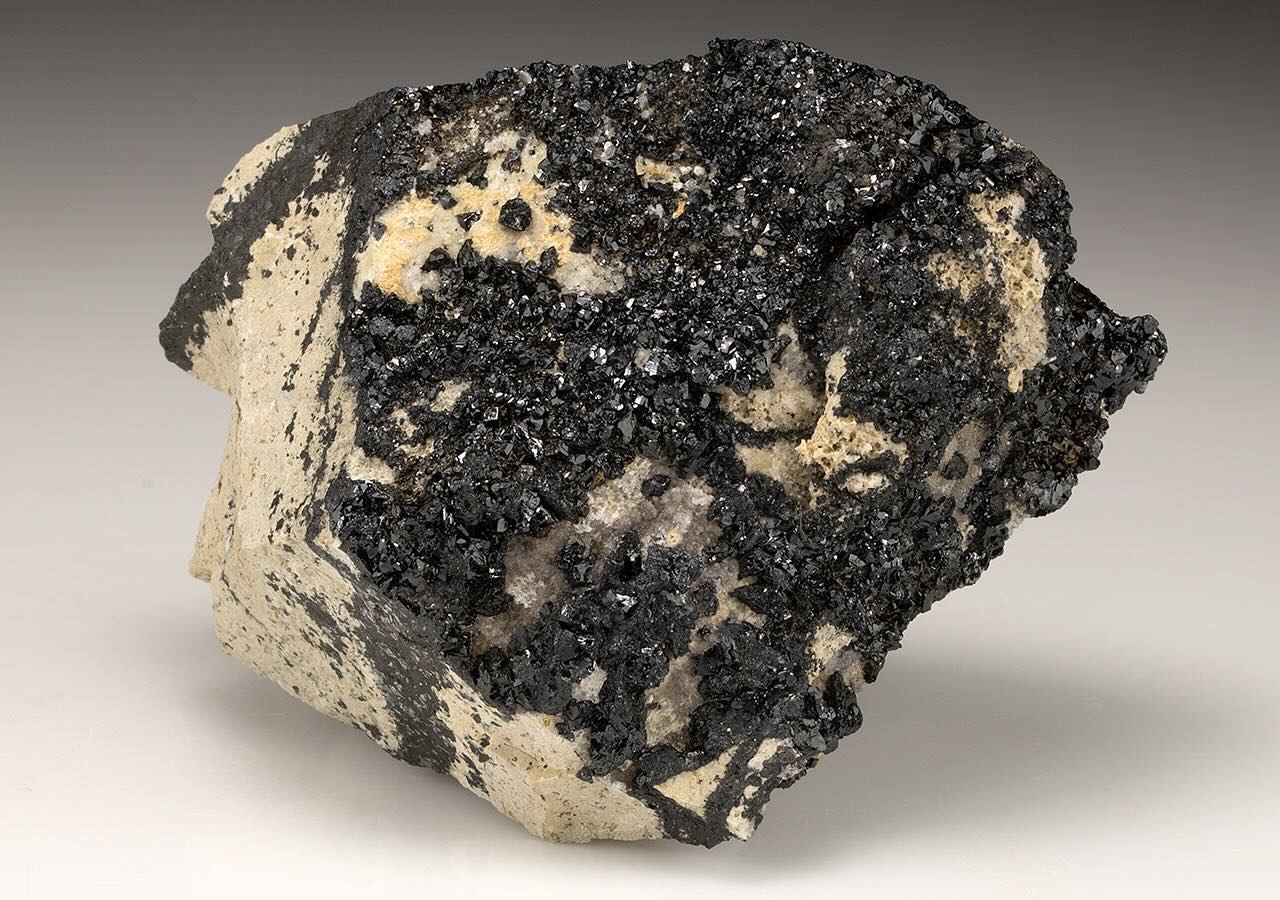
Povondraite is a rare and intriguing mineral that captures the interest of geologists and collectors alike. Named after Czech mineralogist Pavel Povondra, this mineral belongs to the tourmaline group, known for its complex chemical composition and vibrant colors. Povondraite typically forms in metamorphic rocks and is often found in association with other tourmalines. Its unique properties make it a subject of study for those fascinated by Earth's geological processes. In this post, we'll uncover 30 fascinating facts about Povondraite, from its discovery to its physical characteristics and uses. Get ready to dive into the world of this captivating mineral!
Key Takeaways:
- Povondraite is a rare and unique mineral belonging to the tourmaline group, known for its dark color, complex structure, and association with boron-rich rocks. It's highly prized by collectors and valuable for scientific research.
- Named after Czech mineralogist Pavel Povondra, povondraite's dark brown to black color comes from its iron content. It's found in metamorphic rocks and has a cat's eye effect, making it a prized gem for collectors.
What is Povondraite?
Povondraite is a rare mineral that belongs to the tourmaline group. It was named after the Czech mineralogist Pavel Povondra. This mineral is known for its unique properties and striking appearance.
- Povondraite is a member of the tourmaline group, which includes a variety of boron silicate minerals.
- It was named in honor of Pavel Povondra, a Czech mineralogist who made significant contributions to the study of tourmalines.
- Povondraite typically forms in metamorphic rocks, especially those rich in boron.
- The mineral is often found in association with other tourmalines, such as schorl and dravite.
- Povondraite is known for its dark brown to black color, which can sometimes appear almost metallic.
Chemical Composition and Structure
Understanding the chemical composition and structure of povondraite helps in identifying and studying this mineral.
- Povondraite has the chemical formula NaFe3+3(Al4Mg2)(BO3)3Si6O18(OH)3O.
- It contains elements such as sodium, iron, aluminum, magnesium, boron, silicon, and oxygen.
- The mineral's structure is complex, with a hexagonal crystal system.
- Povondraite crystals are typically prismatic, with well-formed faces and edges.
- It has a Mohs hardness of 7 to 7.5, making it relatively hard and durable.
Physical Properties
The physical properties of povondraite make it a fascinating mineral for collectors and geologists alike.
- Povondraite has a vitreous to sub-metallic luster, giving it a shiny appearance.
- The mineral's streak is brownish-black, which helps in its identification.
- It has a specific gravity of 3.1 to 3.3, indicating its density.
- Povondraite is typically opaque, though thin sections can be translucent.
- The mineral exhibits no cleavage, meaning it does not break along specific planes.
Occurrence and Locations
Povondraite is found in specific geological environments and locations around the world.
- The mineral is primarily found in metamorphic rocks, such as schists and gneisses.
- Povondraite has been discovered in several countries, including the Czech Republic, Brazil, and the United States.
- In the Czech Republic, povondraite is found in the famous pegmatite deposits of the Bohemian Massif.
- Brazilian povondraite is often associated with the rich tourmaline deposits of Minas Gerais.
- In the United States, povondraite has been found in California and Maine.
Uses and Significance
While povondraite is not widely used in commercial applications, it holds significance for collectors and researchers.
- Povondraite is highly prized by mineral collectors for its rarity and unique appearance.
- The mineral is often used in scientific research to study the properties and formation of tourmalines.
- Povondraite can sometimes be cut and polished for use in jewelry, though this is rare due to its scarcity.
- The study of povondraite and other tourmalines helps geologists understand the geological processes that form boron-rich minerals.
- Povondraite's unique properties make it a valuable specimen for educational purposes in mineralogy and geology.
Interesting Facts
Here are some intriguing tidbits about povondraite that highlight its uniqueness and appeal.
- Povondraite is one of the few tourmalines that contain significant amounts of iron and magnesium.
- The mineral's dark color is due to the presence of iron in its structure.
- Povondraite crystals can sometimes exhibit a cat's eye effect, where a band of light moves across the surface.
- The mineral is named after Pavel Povondra, who was a prominent figure in the study of tourmalines during the 20th century.
- Povondraite is considered a collector's gem, with well-formed crystals fetching high prices on the mineral market.
Final Thoughts on Povondraite
Povondraite, a rare and fascinating mineral, has captured the interest of geologists and collectors alike. Its unique properties, such as its striking color variations and complex chemical composition, make it a standout in the world of minerals. Found primarily in Bolivia, this mineral has a rich history and continues to be a subject of study for those passionate about geology.
Understanding povondraite's formation and characteristics not only enriches our knowledge of Earth's geological processes but also highlights the incredible diversity of minerals found on our planet. Whether you're a seasoned collector or just starting to explore the world of minerals, povondraite offers a glimpse into the intricate and beautiful world beneath our feet.
Keep an eye out for this remarkable mineral at gem shows or in specialized collections. Its beauty and rarity make it a true gem in the mineral kingdom.
Frequently Asked Questions
Was this page helpful?
Our commitment to delivering trustworthy and engaging content is at the heart of what we do. Each fact on our site is contributed by real users like you, bringing a wealth of diverse insights and information. To ensure the highest standards of accuracy and reliability, our dedicated editors meticulously review each submission. This process guarantees that the facts we share are not only fascinating but also credible. Trust in our commitment to quality and authenticity as you explore and learn with us.
